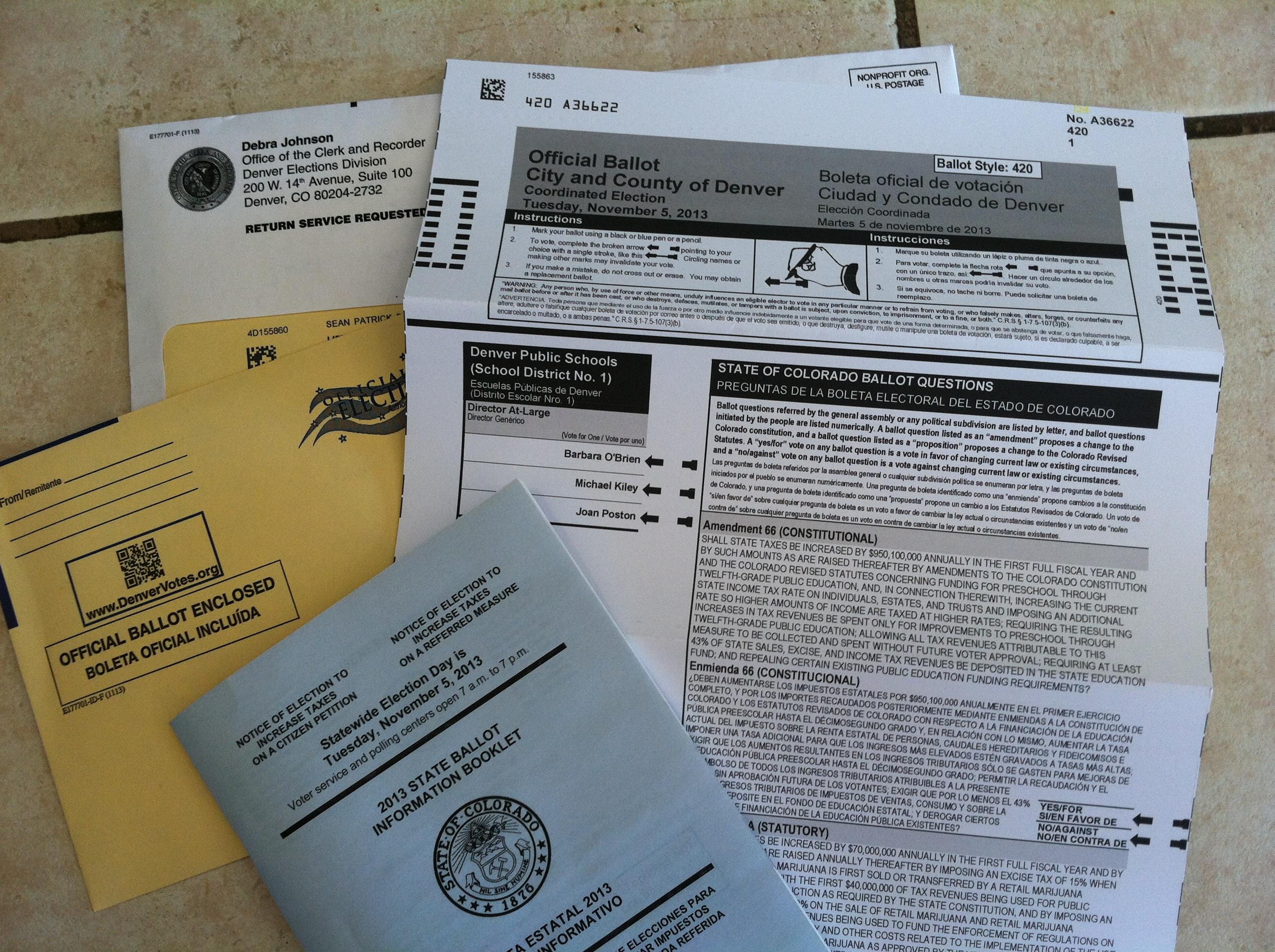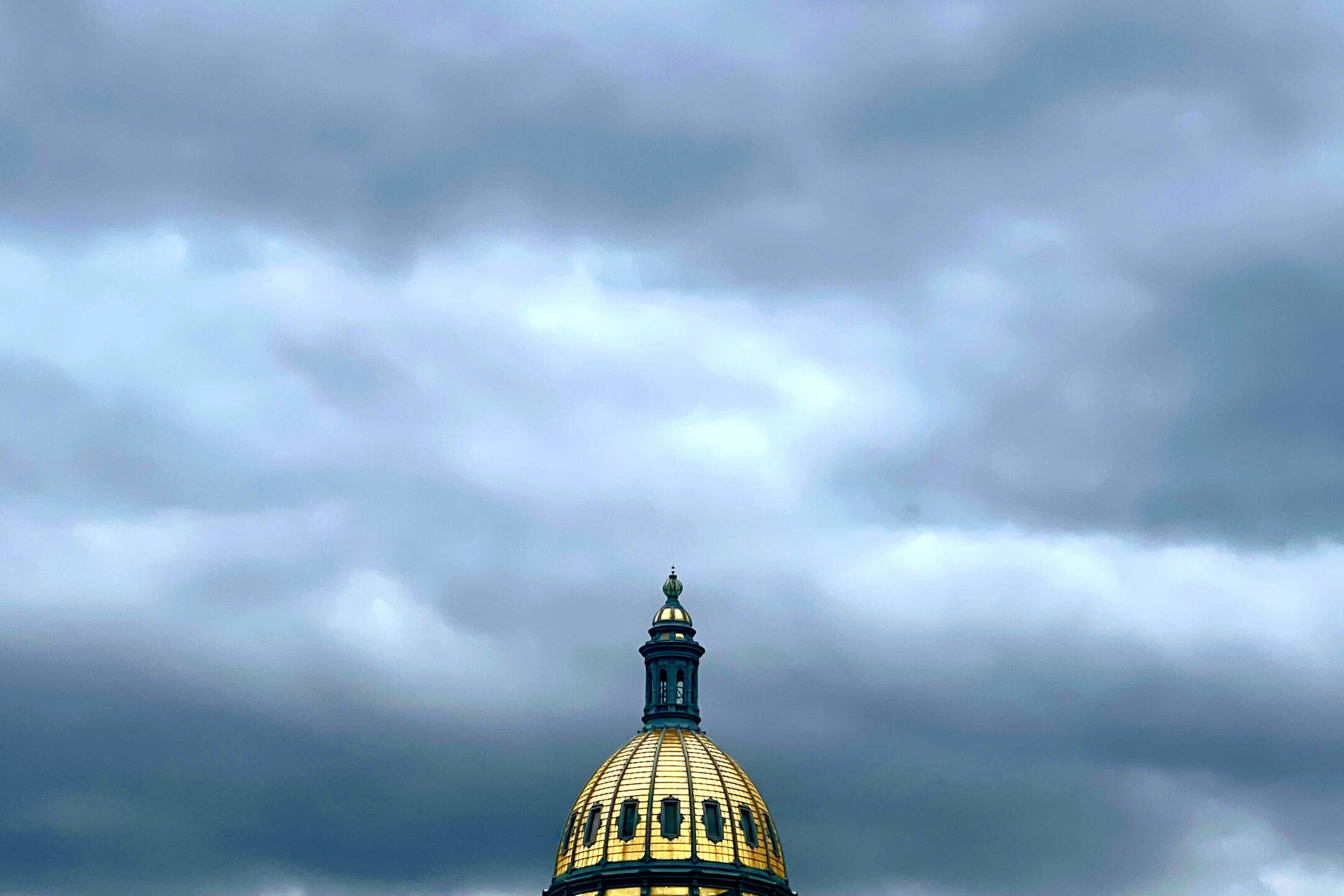
Monday was the deadline to turn in signatures for November ballot initiatives, a process that is used much more in Colorado than in most U.S. states, according to experts.
"I think it's largely because it's part of the political culture in Colorado," says Jennie Bowser, formerly with the bipartisan National Conference of State Legislatures in Denver, and now consulting on the ballot initiative process.
"It's largely true of Western states in general. We have this very populist tradition here. This sense of independence, that we'll do it ourselves."
Voters are expected to decide several contentious issues this fall, including whether to label food that includes genetically-modified ingredients and a measure to limit abortions. The tradition of using ballot measures to deal with contentious issues goes back a century in Colorado, but the process itself is sometimes controversial.
Bowser says Colorado voters are often faced with deciding tough issues because they're often the ones legislatures can't or don't want to address themselves. "Something like, say, term limits or campaign finance reform, and [legislators] don't like to place those kinds of limits on themselves," Bowser says.
The chance to pursue ballot initiatives wasn't in the constitution in 1876 when Colorado became a state. Voters got that power in the early 1900's, motivated by a group called the Direct Legislation League and others who thought the state Legislature was too friendly to industries including railroads and timber.
"Voters got frustrated, and felt like their government was in the hip pocket of those businesses," Bowser says.
Pressured by then-Gov. John F. Shafroth, the Colorado State Assembly passed a law to create the ballot initiative process. As a result of its passage, and Coloradans using the process over the years, Colorado has become a national leader in several things, including the recent legalization of recreational marijuana and the restrictions on taxation that voters passed in 1992 in an amendment called the Taxpayer's Bill of Rights, or TABOR.
Bowser says laws like TABOR show that at times, the ballot initiative process results in laws that can come into conflict, making the process somewhat controversial. One consequence of TABOR was a shortage in school budgets in the 1990s, because the law placed strict limits on how much money the government could spend. That helped lead to another amendment voters passed in 2000, requiring the Legislature to increase funding for education.
"When you put them together, it can make it really difficult for the Legislature to do its job," Bowser says.
Another controversial element of ballot initaitives is the source of their support. Some critics of the process say it has been co-opted by special interests and wealthy individuals and industries. Bowser says that complaint is not new: In 1912, Colorado voters weighed in on 32 initiatives, and many were put on the ballot by special interests, according to analysis by Daniel Smith of Florida University, formerly of the University of Denver and an expert on the ballot initiative process.
"What I think is different today is that it's become a profession," Bowswer says. People are paid to gather signatures for ballot initatives, and attorneys specialize in drafting the initiatives, Bowser says.
For more information, see The National Conference of State Legislatures' searchable database of all the ballot initatives passed by states.









